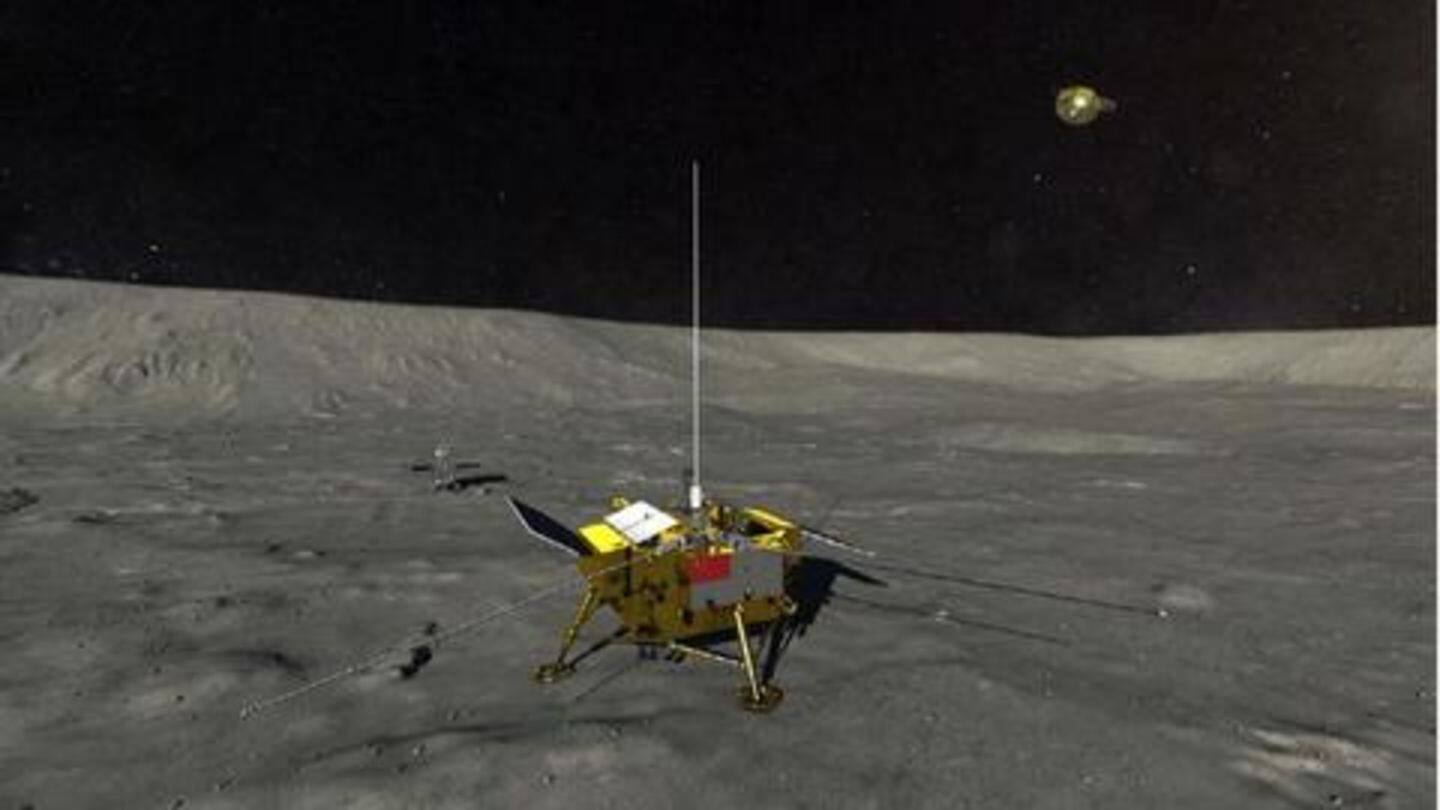
In historic moment, China lands probe on moon's dark side
What's the story
As promised, China has managed to land its Chang'e-4 space probe on the dark side of the moon, marking humankind's first spacecraft landing on the dark side. The probe made a "soft-landing" on the dark side at 0226 GMT, and has already transmitted the first image of the dark side from the lunar surface. Here are the details.
Quote
A 'new chapter' in lunar exploration, says the CNSA
"With the communication assistance of the relay satellite Queqiao, meaning Magpie Bridge, the probe sent back the first-ever close-up photograph of the moon's far side, opening a new chapter in lunar exploration," said the China National Space Administration (CNSA) on its website.
Chang'e-4
After several delays, Chang'e-4 was launched in December 2018
Chang'e-4, named after the Chinese goddess of the moon, was originally slated to be launched in 2015. However, after several delays, the probe was launched on December 8, 2018, and was carried into space by a Long March-3B rocket. Chang'e-4 entered the lunar orbit on December 12, and was slated to land on the dark side of the moon on Thursday, January 3.
Mission
The primary objectives of Chang'e-4
The Chang'e-4 probe contains a lander, as well as a rover that can explore the lunar surface. Now that the landing has been made, China plans to use the rover to survey the moon's terrain and gather data on landform and mineral composition. A particular area of focus is the Aitken basin, which is one of the largest craters in the solar system.
Experiments
China also plans to conduct a vegetable-growing experiment
However, that's not all. Chang'e-4 is also carrying seeds for conducting an experiment in cultivating vegetables in a closed environment on the lunar surface. Further, it is also equipped with a panorama camera, and a plethora of measuring devices for measuring neutron radiation and neutral atoms on the dark side of the moon.
Dark side
The dark side of the moon has long fascinated humankind
While humans have visited the near side, or the visible side of the moon multiple times, the dark side of the moon has long fascinated humanity. Owing to the moon being tidally locked to the Earth, we can only see one side of the moon i.e. the near side, while the dark side remains completely obscured from view. Although spacecraft have previously viewed it, none had ever landed, until today.
Do you know?
A brief history of (manned and unmanned) lunar landings
For those unaware, the near side of the moon was reached by US astronauts between 1969 and 1976, while the Soviet Union achieved the feat in 1976. In 2013, China made its first landing on the near side using its Chang'e-3 probe.
China
China is slowly starting to realize its space ambitions
The historic feat by China marks a major step in its mission to be at par with the US and Russia and become a major space power by 2030. Now, China plans to commence the construction of its large modular space station next year as the third-phase of its Tiangong space station program. Earlier, China had launched the Tiangong-1 and Tiangong-2 space stations as preliminary steps.
Tensions
Tensions starting to show between Beijing, Washington in space race
Apart from civilian space endeavors, China has also tested anti-satellite missiles. Understandably, despite Beijing's insistence that its intentions are peaceful, Washington remains unconvinced. While the US Congress has already banned NASA from two-way cooperation with the CNSA, US President Trump has sought to create a new 'Space Force' by 2020 as the sixth branch of the military to counter China's advances.